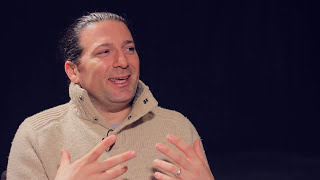In Chapter 19 of 19 in her 2011 Capture Your Flag interview with host Erik Michielsen, Stacie Grossman Bloom answers "Why is Interdisciplinary Collaboration So Important to Creating the Global Nutrition Program?" Grossman Bloom notes the overlapping issues, for example malnutrition and infectious disease. By inserting interdisciplinarity into the conversation, scientists can have more informed conversations using the most cutting edge laboratory research data and techniques.
Stacie Grossman Bloom is the Executive Director at the NYU Neuroscience Institute at NYU Langone Medical Center. Previously, she was VP and Scientific Director at the New York Academy of Sciences (NYAS). She earned her PhD in Neurobiology and Cell Biology at Georgetown University and did a post-doctoral fellowship at Rockefeller University in New York City. She earned her BA in Chemistry and Psychology from the University of Delaware.
Transcript:
Erik Michielsen: Why is interdisciplinary collaboration so important in creating the global nutrition program?
Stacie Grossman Bloom: I think inserting interdisciplinarity into the conversation of global nutrition is really key. There is a lot of overlap in nutrition issues and, for example, infectious disease. Not only scientifically is there a lot of underlying commonality, but in the field when you are talking about a community that’s suffering from great malnutrition, they are also often suffering from infectious disease. So inserting interdisciplinarity into the conversation allows those two groups of scientists to have, you know, a conversation that also probably doesn’t normally happen. A lot of what we were told from stakeholders when we were planning the institute is that there isn’t a lot of interdisciplinarity in the conversations of nutrition science. And, that by introducing that, you are also bringing nutrition scientists up to date with the most cutting edge research that is going on in the lab, not just the data, but the techniques.























